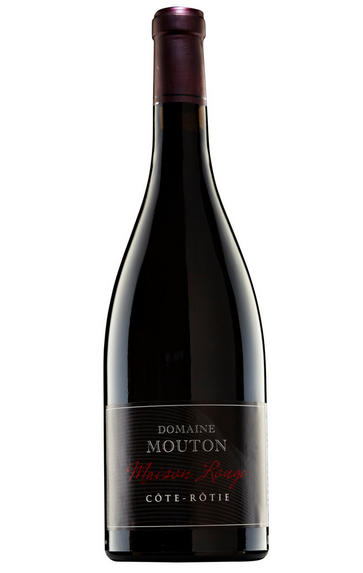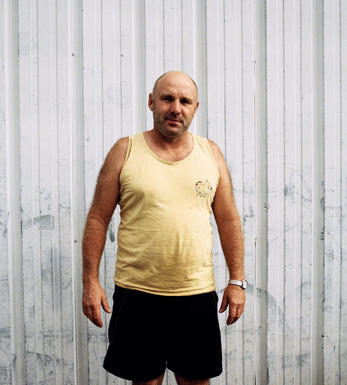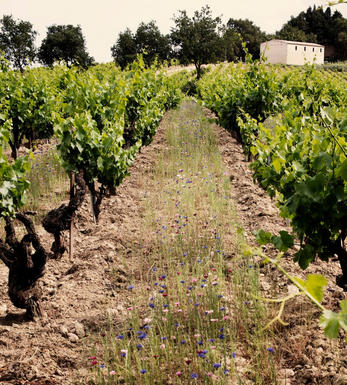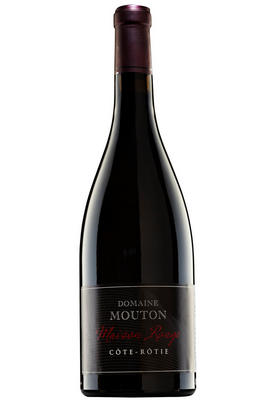
About this WINE

Mouton Père & Fils
Father and son, Jean-Claude and Bryan Mouton own vines which sit high above the village of Condrieu. Their modest winery is located right on the top of the hill, giving a wonderful view over the valley below. They currently farm 3.4 hectares in the appellation, with another 1.5 due to come into use over the next few years. The brilliant Viognier IGP wine contains fruit from 30- to 40-year-old vines but which, at 385-395m, lie just above the Condrieu classification altitude limit of 350m. The two original Condrieu lieux dits cuvées express two quite different terroirs. Côte Bonnette is mainly planted on granite, whilst Côte Chatillon (not available this year) is based on a mixture of clay, limestone and loess. In the winery, minimal new oak is used and the wines are matured in Burgundian barrels with little to no toasting and one concrete egg.
Condrieu was badly hit by the frost in 2021 and as such, there is very little available. Bryan explains that their yields were reduced by 50% this year and consequently we are only able to include two cuvées in this offer, both with limited volumes. Nonetheless, both these wines display a level of finesse and elegance that is wonderful to see from wines with a reputation for weight and richness. These will be gorgeous to drink over the next two to three years.

Côte-Rôtie
Côte-Rôtie is one of the most famous of the northern Rhône appellations, with some single vineyard cuvées now selling for the same prices as First Growth Bordeaux. It is the northernmost outpost of the Syrah grape.
Côte-Rôtie translates as ‘roasted hillside’, as the south-facing slopes are exposed to the maximum-possible sunlight. Vines have been planted here since Roman times, although the appellation was only created in 1940. Today it covers 500 hectares, with 276 hectares of vineyards stretched across eight kilometres.
Phylloxera devastated vineyards in the late 1800s and Côte-Rôtie’s fortunes remained in the doldrums for another century. After the War, a farmer would receive double the price for a kilo of apricots as for a kilo of grapes, hence vineyards were grubbed up and wine production became increasingly smaller.
It has only really been recognised as a top-quality wine-producing area since the 1970s, with Guigal being the main impetus behind its revival. The two best slopes, Côte Brune and Côte Blonde, rise steeply behind Ampuis and overlook the river. The Côte Brune wines are much firmer and more masculine (the soils are clay and ironstone), whereas the Côte Blonde makes wines with more finesse and elegance due to its light, sandy-limestone soil. Both the Côte Brune and Côte Blonde vineyards rise to 1,000 feet, with a gradient of 30 to 50 degrees.
The wines are made from the Syrah grape, however up to 20 percent of Viogner can be used in the blend, adding finesse, elegance and floral characteristics to the wine. Viognier ripens more quickly than Syrah and the appellation rules stipulate that the grapes must be added to the fermentation – rather than blended later. The best Côte-Rôtie are very deep in colour, tannic and spicy, and need 10 years to evolve and develop.
There are nearly 60 official vineyards (lieux-dits); the best-known are: La Mouline, La Chatillonne (Vidal-Fleury, owned by Guigal) and La Garde (Rostaing) in Côte Blonde; La Viallière, (Rostaing), La Landonne (Guigal, Rostaing) and La Turque (Guigal) in Côte Brune.
Styles vary from heavily-extracted tannic wines which need many years to soften through to lighter, supple and less-structured wines which do not require extended bottle ageing. The most famous wines of Côte-Rôtie are Guigal’s three single-vineyard cuvées: La Mouline, La Turque and La Landonne. These are aged in new wood for 48 months, and demand for them amongst connoisseurs and collectors is significant, leading to prices sometimes comparable to Bordeaux First Growths.
Recommended producers: Guigal, Gerrin, Rostaing, Ogier, Burgaud
Best vintages: 2006, 2005, 2004, 2001, 1999, 1991, 1990, 1985

Syrah/Shiraz
A noble black grape variety grown particularly in the Northern Rhône where it produces the great red wines of Hermitage, Cote Rôtie and Cornas, and in Australia where it produces wines of startling depth and intensity. Reasonably low yields are a crucial factor for quality as is picking at optimum ripeness. Its heartland, Hermitage and Côte Rôtie, consists of 270 hectares of steeply terraced vineyards producing wines that brim with pepper, spices, tar and black treacle when young. After 5-10 years they become smooth and velvety with pronounced fruit characteristics of damsons, raspberries, blackcurrants and loganberries.
It is now grown extensively in the Southern Rhône where it is blended with Grenache and Mourvèdre to produce the great red wines of Châteauneuf du Pape and Gigondas amongst others. Its spiritual home in Australia is the Barossa Valley, where there are plantings dating as far back as 1860. Australian Shiraz tends to be sweeter than its Northern Rhône counterpart and the best examples are redolent of new leather, dark chocolate, liquorice, and prunes and display a blackcurrant lusciousness.
South African producers such as Eben Sadie are now producing world- class Shiraz wines that represent astonishing value for money.



Buying options
Add to wishlist
Description
Mouton’s vines are in the south of the appellation, specifically in the enclaves of Semons and Tupins and they include a patch of the Mason Rouge vineyard, which he sometimes, although not in 2014, vinifies separately. 2014 was a tricky vintage with persistent danger of rot throughout the second half of the season; this is hard to tell from the quality of this wine; charming and feminine with soft red fruit characteristics and a gentle spice on the finish.
Simon Field MW, Wine Buyer
wine at a glance
Delivery and quality guarantee